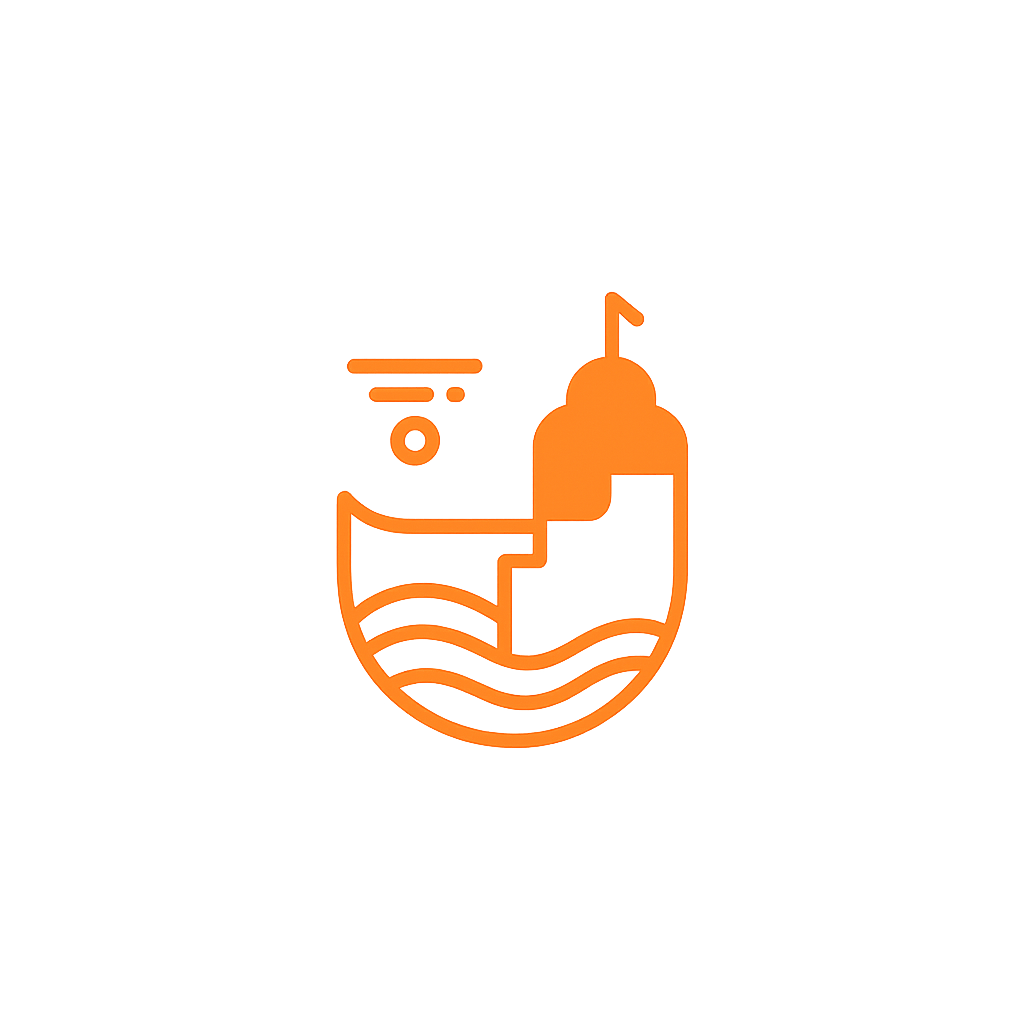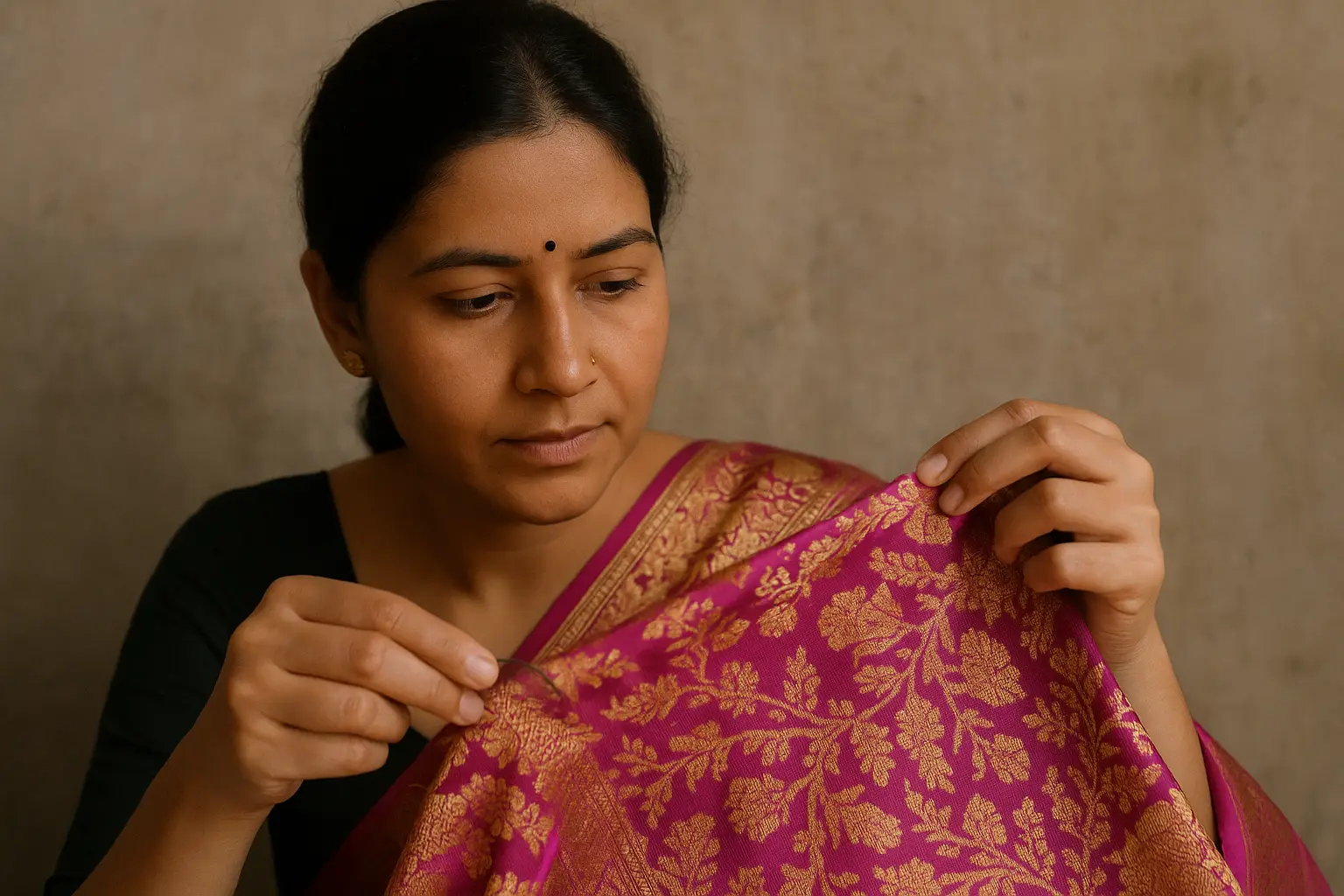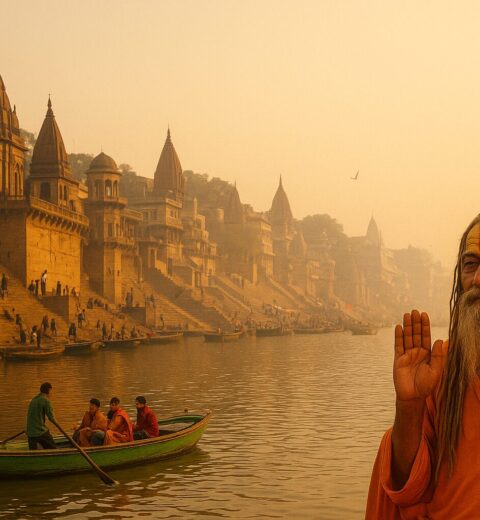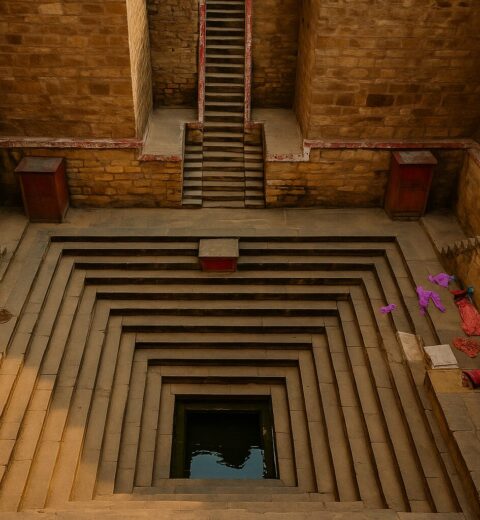Banarasi sarees are treasured across India for their timeless elegance, intricate craftsmanship, and cultural heritage. But in today’s market, it’s becoming harder to tell the difference between a real, handwoven Banarasi saree and a machine-made imitation. If you’re visiting Varanasi or buying a Banarasi saree online, here’s how to make sure you’re investing in the real deal.
1. Feel the Fabric
An original Banarasi saree is woven from pure silk or fine cotton. It feels soft to the touch but carries a certain weight because of the density of the weave and zari work. On the other hand, fake sarees made on power looms or from synthetic materials often feel overly smooth, slippery, or too light.
Try this: Gently crumple a part of the saree in your fist. If you hear a soft rustling sound (known as resham ki khanak), it’s likely pure silk.
2. Check the Reverse Side
Authentic handloom sarees are never perfectly neat on the reverse side. You’ll see floating threads, uneven stitching, or small knots – all signs of human effort. Power loom sarees usually have a machine-perfect mirror image on the back, which is too clean to be true.
Look closely at the motifs. In handwoven sarees using the Kadhua technique, each motif is woven separately, which leaves behind tiny thread tails. That’s a good thing!
3. Examine the Border and Pallu
The pallu (anchal) and border of a genuine Banarasi saree are often the most detailed parts. Traditional designs include:
- Shikargah – intricate hunting scenes
- Jangla – jungle-like vine motifs
- Butidar – small floral or mango bootis
- Kalga-bel, parrots, and peacocks
Machine-made sarees tend to repeat these patterns flatly and lack the dimension of a handwoven masterpiece.
4. Look for the GI Tag
In 2009, Banarasi sarees received a Geographical Indication (GI) tag to protect the legacy of true artisans. Authentic sarees may carry a government-authorized handloom tag, QR code, or hologram indicating their origin.
If your saree comes with a GI certificate, you’re looking at a piece of certified heritage.
5. Inspect the Zari Work
Zari is what gives Banarasi sarees their iconic shimmer. Real zari is made of gold or silver-plated thread and shines subtly – not like glitter. Fake zari is often made of plastic or metallic yarn and may flake off over time.
Feel the zari. Is it soft and rich, or brittle and loud? Your fingers will tell you.
6. Don’t Be Fooled by a Low Price
Creating a real Banarasi saree can take 15 days to 6 months, depending on the complexity. That kind of craftsmanship comes at a price. If someone offers you a “handloom Banarasi” for ₹2,000–₹4,000, be cautious. Most authentic sarees start around ₹7,000 and go much higher.
7. Ask the Right Questions
When shopping, especially in markets or tourist areas, ask:
- Was this made on a handloom or power loom?
- How many days did it take to weave this?
- Can I visit your workshop or meet the weaver?
Weavers who have truly made the saree will answer these confidently—and even show you photos or videos of the loom in action.
8. Appreciate Small Imperfections
Handwoven sarees have charm in their inconsistencies. A slightly uneven motif, a thread out of place—these aren’t flaws; they’re fingerprints of the artisan. Machine-made sarees are often too perfect, but lack warmth, depth, and character.
The Fire Test: Use with Caution
This is an old trick but should only be used if you’re careful:
- Cut a small thread from an inner hem.
- Burn it with a match.
Real silk burns slowly, smells like burnt hair, and turns to soft ash.
Fake silk melts quickly, smells like plastic, and forms a hard, black bead.
Warning: This is not recommended in shops unless you get permission.
Final Thoughts
A real Banarasi saree isn’t just fabric—it’s a story woven with skill, patience, and pride. Each thread carries the heritage of Varanasi’s weavers. When you buy a genuine piece, you’re not just purchasing beauty—you’re supporting a living tradition.
So take your time. Ask questions. Look closely. And most importantly, trust the hands behind the loom.





